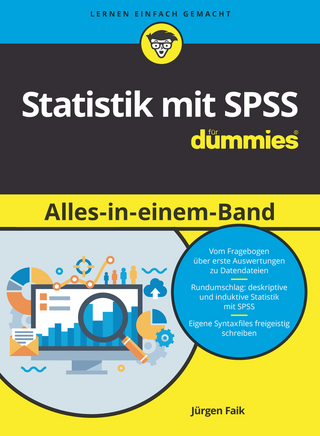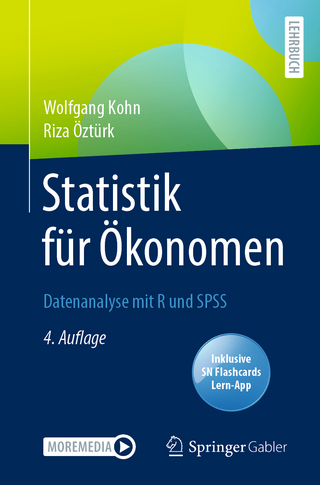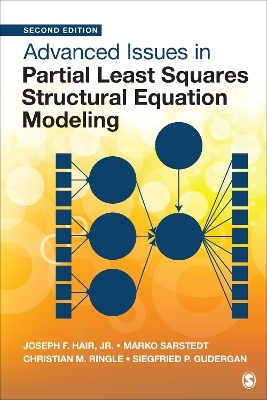
An Introduction to Survival Analysis Using Stata, Third Edition
Stata Press (Verlag)
978-1-59718-074-0 (ISBN)
- Titel erscheint in neuer Auflage
- Artikel merken
This updated third edition highlights new features of Stata 11, including competing-risks analysis and the treatment of missing values via multiple imputation. Other additions include new diagnostic measures after Cox regression, Stata’s new treatment of categorical variables and interactions, and a new syntax for obtaining prediction and diagnostics after Cox regression.
After reading this book, you will understand the formulas and gain intuition about how various survival analysis estimators work and what information they exploit. You will also acquire deeper, more comprehensive knowledge of the syntax, features, and underpinnings of Stata’s survival analysis routines.
Mario Cleves is a professor of pediatrics at the University of Arkansas for Medical Sciences and a senior biostatistician at the Arkansas Center for Birth Defects Research and Prevention. William Gould is the president and head of development at StataCorp. Roberto Gutierrez is the director of statistics at StataCorp. Yulia Marchenko is a senior statistician at StataCorp. All are authors of Stata statistical software, in particular, Stata’s widely used survival analysis suite.
The Problem of Survival Analysis
Parametric modeling
Semiparametric modeling
Nonparametric analysis
Linking the three approaches
Describing the Distribution of Failure Times
The survivor and hazard functions
The quantile function
Interpreting the cumulative hazard and hazard rate
Means and medians
Hazard Models
Parametric models
Semiparametric models
Analysis time (time at risk)
Censoring and Truncation
Censoring
Truncation
Recording Survival Data
The desired format
Other formats
Example: Wide-form snapshot data
Using stset
A short lesson on dates
Purposes of the stset command
Syntax of the stset command
After stset
Look at stset’s output
List some of your data
Use stdescribe
Use stvary
Perhaps use stfill
Example: Hip fracture data
Nonparametric Analysis
Inadequacies of standard univariate methods
The Kaplan–Meier estimator
The Nelson–Aalen estimator
Estimating the hazard function
Estimating mean and median survival times
Tests of hypothesis
The Cox Proportional Hazards Model
Using stcox
Likelihood calculations
Stratified analysis
Cox models with shared frailty
Cox models with survey data
Cox model with missing data–multiple imputation
Model Building Using stcox
Indicator variables
Categorical variables
Continuous variables
Interactions
Time-varying variables
Modeling group effects: fixed-effects, random-effects, stratification, and clustering
The Cox Model: Diagnostics
Testing the proportional-hazards assumption
Residuals and diagnostic measures
Parametric Models
Motivation
Classes of parametric models
A Survey of Parametric Regression Models in Stata
The exponential model
Weibull regression
Gompertz regression (PH metric)
Lognormal regression (AFT metric)
Loglogistic regression (AFT metric)
Generalized gamma regression (AFT metric)
Choosing among parametric models
Postestimation Commands for Parametric Models
Use of predict after streg
Using stcurve
Generalizing the Parametric Regression Model
Using the ancillary() option
Stratified models
Frailty models
Power and Sample-Size Determination for Survival Analysis
Estimating sample size
Accounting for withdrawal and accrual of subjects
Estimating power and effect size
Tabulating or graphing results
Competing Risks
Cause-specific hazards
Cumulative incidence functions
Nonparametric analysis
Semiparametric analysis
Parametric analysis
References
Author Index
Subject Index
| Erscheint lt. Verlag | 6.10.2010 |
|---|---|
| Verlagsort | College Station |
| Sprache | englisch |
| Maße | 187 x 235 mm |
| Gewicht | 885 g |
| Themenwelt | Mathematik / Informatik ► Mathematik ► Computerprogramme / Computeralgebra |
| Naturwissenschaften ► Biologie | |
| ISBN-10 | 1-59718-074-2 / 1597180742 |
| ISBN-13 | 978-1-59718-074-0 / 9781597180740 |
| Zustand | Neuware |
| Haben Sie eine Frage zum Produkt? |
aus dem Bereich



